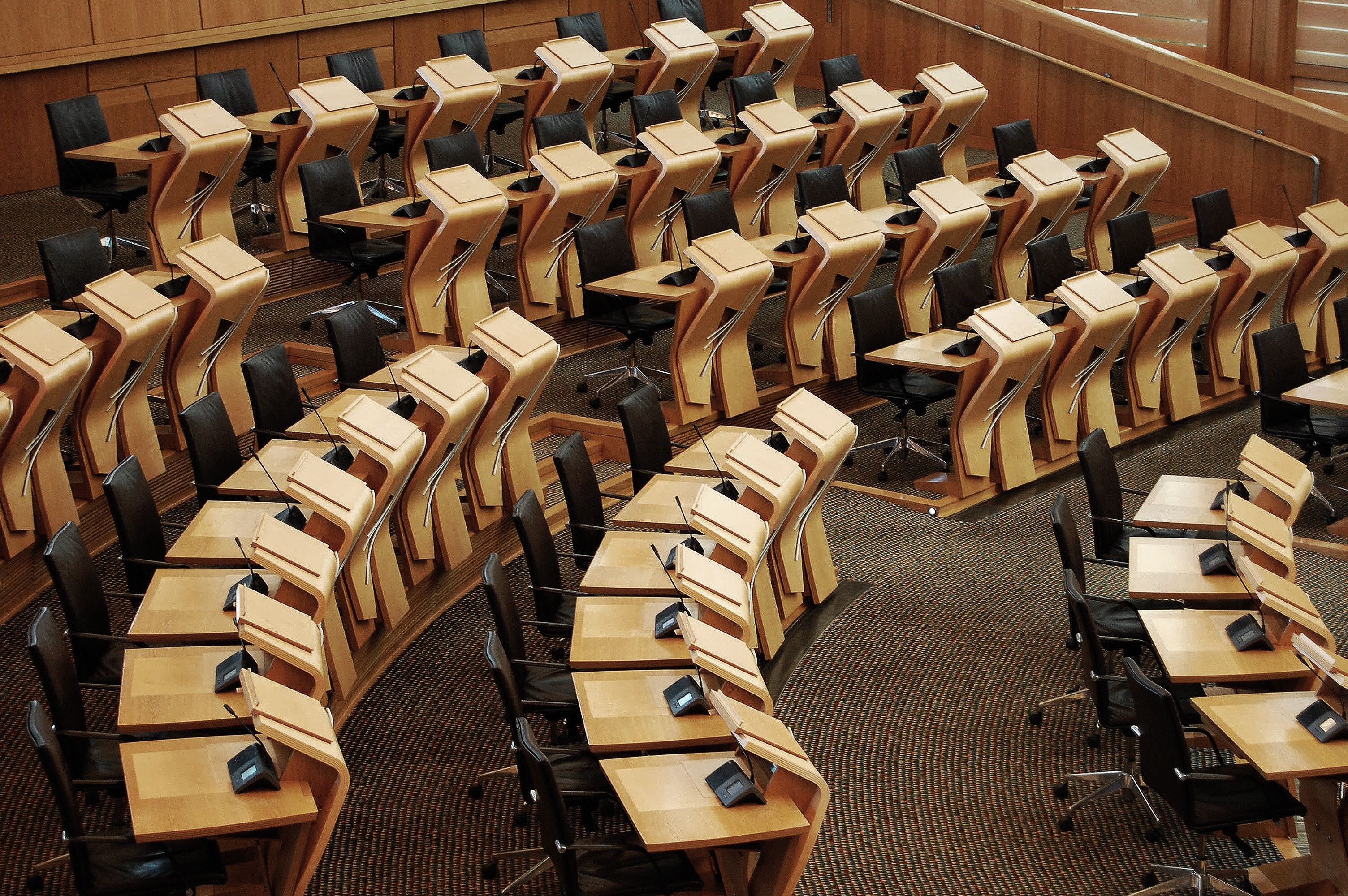Reduce car-km by 20% by 2030
More emphasis on demand management to achieve the Scottish Government’s existing commitment to reduce car-km 20% by 2030, including reducing dependence on the private motor car.
Scotland needs to move around 6 billion person-kilometres per year travelled by car to public transport (and walking and cycling) by 2030 to meet this target. This will require an 80% increase in passenger-km travelled by bus and tram, and a more than doubling of rail passenger-km in Scotland by 2030.161
The government’s draft ‘Route Map’ to achieve the very challenging 20% reduction needs a whole new strong emphasis on demand management. At present, it relies heavily on incentives of increased active travel cash, better public transport etc. However it is very clear (as strongly stated by Committee on Climate Change CEO Chris Stark and by transport experts such as the University of Stirling’s Prof Iain Docherty) that incentives alone are seriously insufficient.
It is already 3 years since the 20% reduction commitment was given, and traffic is increasing rather than falling.
The Route Map talks of publishing ideas on demand management in 2025 – and presumably implementing them even later. Meanwhile expenditure, policy development and planning for trunk road developments which will increase capacity continues (for example, the dualling of the A9 and the changes to Edinburgh’s Sheriffhall roundabout).
Friends of the Earth Scotland’s ‘On the Move’ report estimates that an additional £1.6bn investment is needed per year to meet the Scottish Government’s target of reducing car traffic by 20%, and highlights the economic and social benefits this will bring. It suggests that 22,000 jobs could be directly created in Scotland by investing in public transport, plus hundreds of thousands more indirectly in areas like manufacturing and infrastructure construction. It also finds that the public transport infrastructure projects planned in the Scottish Government’s Strategic Transport Projects Review 2 need to be completed by 2030, much sooner than currently scheduled, to meet the 20% car-km reduction target.
It is vital that work on, and implementation of, strong demand management policies is progressed urgently. And this has to include forms of road user charging if there is to be the major impact on car-km that is needed to meet the commitment.
There are many methods of charging, and a combination is likely to be needed. All require political courage, and, for that reason, we have seen little action so far on this, the most essential and urgent demand-management tool. The UK Government should be pressed on replacing petrol duty with distance-based charging (probably varied according to location and vehicle type). Scottish local authorities already have powers for local congestion charging and workplace parking levies, but must be incentivised by government to use these powers, and the powers themselves should be expanded. Another option, which could be used in combination, is the variable climate-based MOT levy discussed below – see section on road user charging policies later in this chapter for more on these points.
The implementation plan must set out a clear route map, with actions focused on the sustainable transport hierarchy – active travel at the top, then public transport, followed by electric vehicles. There is a need not only to promote active travel and public transport, but also to reduce car use, including by reducing the convenience of car driving, especially for short journeys where alternatives are available.
As part of this, the Scottish Government needs to develop active travel networks to allow for short everyday walking, wheeling or cycling journeys to be safe, including daily commutes, and to reduce dependence on cars. In addition, integration of active travel and public transport needs to be better developed to reduce the use of private cars, for example with bike storage in stations, and safer access to train stations and bus stops.
In addition, the Scottish Government – with civil society – needs to expand and improve the public discourse on transport pricing and demand reduction instruments. The Fair Fares Review is not sufficient, on its own, to achieve the improvements in public awareness and understanding that are needed.
As part of the transition, the IPPR report ‘Fairly Reducing Car use in Scottish cities’162 offers solutions to ensure that moving away from private cars does not disadvantage low-income households. This transition should include the creation of fair workplace travel plans negotiated with unions and recognise different needs for journeys, for instance, women are more likely to use public transport for care-related journeys than men, this can include more ‘trip-chaining’ with multiple stops to drop kids, collect shopping and care for other family members.163
This policy will lead to improvements in public health, both by reducing emissions from private cars and by encouraging daily exercise. There will also be a significant benefit to the economy of reduced traffic congestion in cities and towns. It will also allow reallocation of roadspace towards other uses, such as green spaces, widened pavements and cycle lanes, helping create 20-minute neighbourhoods. Public Health Scotland research shows that increasing active travel can increase social contact, community contact and local businesses footfall.
For further information:
- Spokes response to the draft route map (see in particular ‘Part 4’), http://www.spokes.org.uk/wpcontent/ uploads/2022/04/2204-20-carkm-reduction-Spokes-response.pdf
- On the Move – investing in public transport to meet carbon targets and create jobs, FoE Scotland, April 2023, https://foe.scot/wp-content/uploads/2023/04/On-the-Move-Report.pdf
- Assessment of demand management measures to reduce road traffic in Scotland: implications for business, Edinburgh Napier University for Transform Scotland, 2022, https://transform.scot/wpcontent/ uploads/2022/11/TR102-TDM-in-Scotland-Report.pdf
- See also ‘Stronger planning’ policy in the Public Sector chapter.
On the Move – investing in public transport to meet carbon targets and create jobs, FoE Scotland , April 2023, https://foe.scot/wpcontent/ uploads/2023/04/On-the-Move-Report.pdf
Fairly reducing car use in Scottish Cities – a Just Transition for transport for low-income households, IPPR, 2022, https://www.ippr.org/ files/2022-07/fairly-reducing-car-use-in-scottish-cities-july-22.pdf
Towards Gender Inclusive and Sustainable Transport Systems, UK Women’s Budget Group, 2021, https://wbg.org.uk/analysis/uk-policybriefings/towards-gender-inclusive-and-sustainable-transport-systems/

